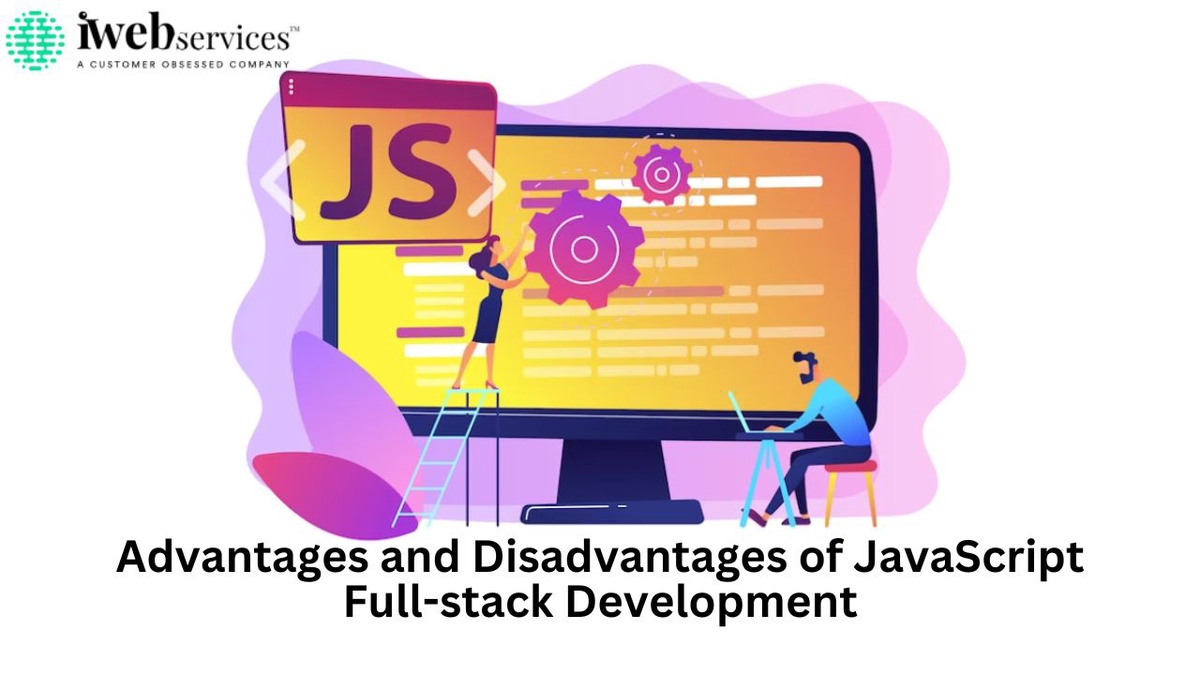JavaScript full-stack development refers to the practice of using JavaScript programming language to build both the client-side (frontend) and server-side (backend) components of an application. It involves working with JavaScript frameworks and tools to develop a complete web application, including the user interface, server logic, and database integration. Developers proficient in JavaScript full-stack development are capable of handling all layers of the application stack, from the frontend user experience to the backend server infrastructure.
Importance and Growing Popularity of full-stack Development:
- Seamless Development Process: full-stack development allows developers to work on all aspects of an application, eliminating the need for coordination between frontend and backend teams.
- Cost and Time Efficiency: full-stack developers possess a wide range of skills, making them versatile and capable of handling multiple tasks.
- Holistic Understanding of the Application: full-stack developers have a comprehensive understanding of the entire application stack.
- Flexibility and Adaptability: full-stack developers can adapt to changing project requirements and technologies more easily.
- Rapid Prototyping and MVP Development: full-stack development allows for faster prototyping and minimum viable product (MVP) development.
- Seamless Communication and Collaboration: full-stack developers can communicate effectively with both frontend and backend teams, bridging the gap between different areas of expertise.
- Job Market Demand: The demand for full-stack developers has been steadily increasing. Organizations seek professionals who can handle end-to-end development, as they are more efficient, versatile, and cost-effective.
- Technology Stacks and Frameworks: The availability of powerful JavaScript frameworks and tools, such as Node.js, React, Angular, and Express.js, has contributed to the growing popularity of full-stack development.
JavaScript full-stack development has become increasingly popular in the world of web development, offering developers the ability to work on both the frontend and backend aspects of an application using a single programming language.
This comprehensive approach has its own set of advantages and disadvantages. In this article, we will explore the benefits and drawbacks of JavaScript full-stack development, shedding light on why it has gained momentum and what considerations developers should keep in mind when adopting this approach.
Advantages of JavaScript full-stack Development:
- Consistent Language: JavaScript is a versatile language that can be used both on the client-side (frontend) and server-side (backend). By utilizing JavaScript for full-stack development, developers can use the same language and codebase across the entire stack, promoting consistency and reducing the need to switch between different languages or frameworks.
- Efficient Development Workflow: JavaScript full-stack development allows developers to work seamlessly across frontend and backend tasks, resulting in a more efficient workflow. They can share code, libraries, and modules between the client and server, streamlining development and reducing duplication of effort.
- Code Reusability: With JavaScript full-stack development, code can be reused across different layers of the application. For instance, code written for data validation on the client side can be reused on the server side, improving productivity and maintainability. This reusability also leads to faster development and easier debugging.
- Real-Time Updates: JavaScript's event-driven nature and ability to handle asynchronous tasks make it well-suited for real-time applications. With frameworks like Socket.io and Meteor.js, developers can build real-time chat applications, collaborative tools, or live streaming platforms where data updates instantly without the need for manual page refreshing.
- Extensive Ecosystem: JavaScript has a vast and mature ecosystem with a wide range of libraries, frameworks, and tools available. From frontend frameworks like React, Angular, and Vue.js to server-side frameworks like Node.js and Express.js, developers have access to a rich collection of resources, allowing them to rapidly develop feature-rich applications.
Disadvantages of JavaScript full-stack Development:
- Steep Learning Curve: JavaScript full-stack development requires proficiency in both frontend and backend technologies. Developers need to be well-versed in JavaScript, client-side frameworks, server-side frameworks, and databases. This learning curve can be steep, especially for developers who are new to full-stack development.
- Increased Complexity: Working on both the front end and back end introduces additional complexity. Developers need to handle different concerns like user interfaces, server logic, data storage, and security. Managing the complexity of a full-stack application can be challenging, and it requires careful planning and organization to ensure efficient development and maintainability.
- Performance Limitations: JavaScript, being an interpreted language, may not offer the same performance as compiled languages like C++ or Java. While modern JavaScript engines have made significant performance improvements, full-stack applications with complex logic or high data processing requirements may face performance limitations.
- Security Risks: full-stack development introduces security challenges, as both the client and server components need to be secured. Developers must ensure proper validation and sanitization of user input, protect against cross-site scripting (XSS) and injection attacks, and implement robust authentication and authorization mechanisms.
- Versioning and Compatibility: JavaScript's rapid evolution often leads to versioning and compatibility challenges. Different versions of JavaScript libraries, frameworks, or tools may have conflicts or breaking changes, requiring developers to carefully manage dependencies and stay updated with the latest releases and best practices.
In conclusion,
JavaScript full-stack development is gaining importance and popularity due to its seamless development process, cost and time efficiency, holistic understanding of applications, flexibility, rapid prototyping capabilities, effective communication and collaboration, and the increasing demand in the job market.
It offers numerous advantages, including a consistent language, efficient workflow, code reusability, and real-time capabilities. However, it also comes with challenges such as increased complexity, performance limitations, security risks, and versioning concerns. Thus, you need to hire JavaScript developers who have in-depth expertise in this technology.
By carefully considering these factors and employing best practices, developers can leverage the strengths of JavaScript to build robust and feature-rich full-stack applications, meeting the demand for faster development cycles, cross-functional expertise, and cost-effective solutions.


No comments yet